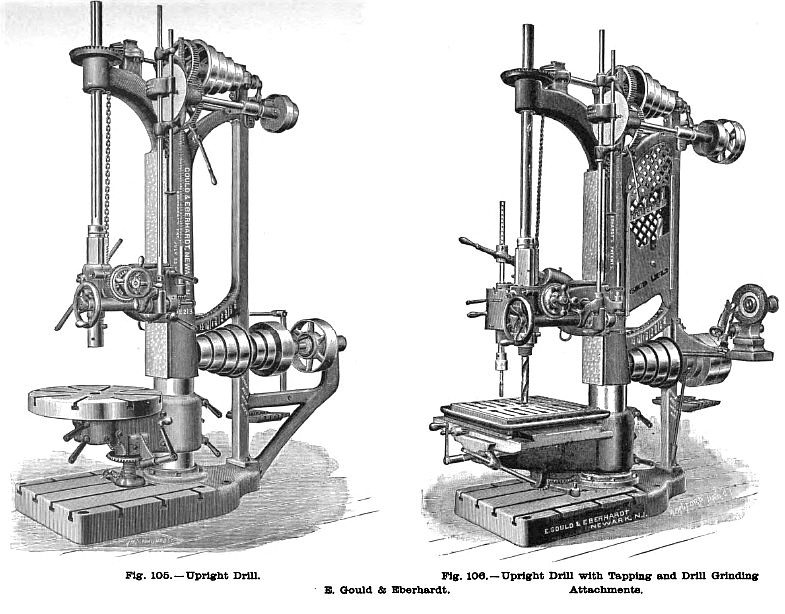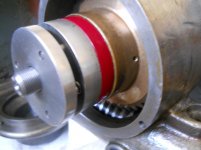Salem Straub
Cast Iron
- Joined
- May 22, 2012
- Location
- WA, USA
I have recently acquired an ancient and huge Gould & Eberhardt camelback drill... 37" swing, powerfeed and backgears etc. I'm currently in the process of getting it mechanically operational, prior to a clean & brighten phase. I now have all the feeds and speeds working to the spindle, and even the power up/down to the drill head itself, but the remaining weak link is the friction disc in the variable speed arrangement for the powerfeeds/power traverse for the drill head.
I've found some discussion of similar friction discs- some are made of paper from what I can gather, although this one looks perhaps to have been a rubber type material. At any rate, it's worn down to the level of the surrounding steel hub and needs to be replaced with new material.
My options, as I see them: some type of hard rubber, in sheet form, which I'd cut and stack.
Heavy leather, cut and stack discs.
Or, use some paper or canvas phenolic block to turn a new disc from (I have both)
What would you guys think is best to try first?
Here's an original GE flyer for the drill, followed by a terrible quick phone video of the drill (apologies for the vertical format, low resolution, and noise level etc.)
Thanks for your input.

I've found some discussion of similar friction discs- some are made of paper from what I can gather, although this one looks perhaps to have been a rubber type material. At any rate, it's worn down to the level of the surrounding steel hub and needs to be replaced with new material.
My options, as I see them: some type of hard rubber, in sheet form, which I'd cut and stack.
Heavy leather, cut and stack discs.
Or, use some paper or canvas phenolic block to turn a new disc from (I have both)
What would you guys think is best to try first?
Here's an original GE flyer for the drill, followed by a terrible quick phone video of the drill (apologies for the vertical format, low resolution, and noise level etc.)
Thanks for your input.









